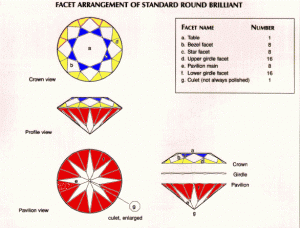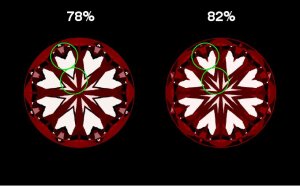- Joined
- Mar 28, 2001
- Messages
- 6,341
Just got the CD yesterday. A cursory review shows that they will also take minor facets into account. Many proportion combinations currently considered ideal will not be. The tables are broken down by their table sizes starting from 47% up to 70%. The results given on each of these charts are for rounds with lower girde length at 80%, stars at 50% and girdle thickness at 3.5% at the mains. For those with DiamCalc, a diamond with an 80% lower girdle length is similar to 83% lower girdle depth. For a discussion of the differences between lower girdle depth vs lower girdle length pm me and I''ll forward you details.
One observation I''ve taken note of (which is not surprising) is that as the tables get larger, there is less selection of combinations for an ideal.
Is it certainly more anal however it appears this is going to be way more accurate than the model they currently have in place. I''ll share more as I test more and compare their results with other known optical performers. So far I like what I see.
One observation I''ve taken note of (which is not surprising) is that as the tables get larger, there is less selection of combinations for an ideal.
Is it certainly more anal however it appears this is going to be way more accurate than the model they currently have in place. I''ll share more as I test more and compare their results with other known optical performers. So far I like what I see.

















300x240.png)